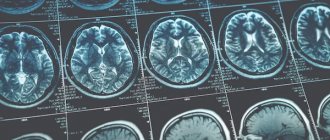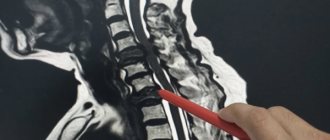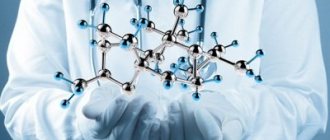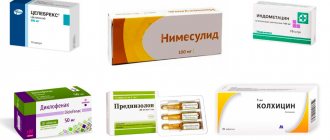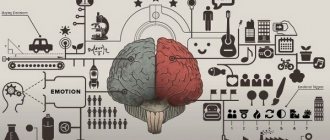Causes of the disease
Cerebral palsy is a common disease.
Its frequency is approximately 2 children per 1000 births, and data may vary depending on the region. The cause of the disorder, like any other cerebral palsy, is pathological changes in the cerebral cortex, subcortical structures, capsules or brain stem. The difference between cerebral palsy and other similar disorders is only in the time of its diagnosis (postnatal period) and the disturbance in the manifestation of reflexes. Cerebral palsy is the result of abnormal development of brain structures or damage to a healthy brain. The process can occur both during pregnancy and childbirth, and in the early neonatal period.
Among the causes of this disease are the following:
- premature birth or birth trauma;
- multiple pregnancy;
- infectious diseases suffered by the mother during pregnancy, as well as mercury poisoning;
- traumatic brain injuries in the early neonatal period or in the first few years of life.
Cerebral palsy is not considered a genetic disease, since most of its cases occur in pathologies of pregnancy and childbirth. However, in 2% of cases inheritance is traced to an autosomal recessive type. Up to half of children with a similar diagnosis were born prematurely. The remaining patients were twins in multiple pregnancies, had low birth weight, or were born by instrumental delivery or emergency cesarean section. It is believed that asphyxia (insufficient oxygen supply to the brain) is one of the factors that can trigger cerebral palsy.
Cerebral palsy can also develop in children born at term. Among the causes that cause such pathologies, birth trauma comes first. In the early neonatal period, they can be caused by brain injuries and other types of brain dysfunction. Heavy metal poisoning, jaundice, stroke - all these factors lead to impaired blood circulation in the cerebral cortex, which affects their normal development. In a healthy child, cerebral palsy can be a consequence of drowning or other cases in which temporary cessation of breathing occurs, as well as inflammatory diseases of the brain, including those of infectious origin.
Cerebral palsy (CP)
- 21.06.2017
Cerebral palsy
(CP) is a non-progressive brain damage caused by exposure to a number of unfavorable factors in the prenatal, perinatal and early postnatal periods, and is always accompanied by movement disorders, as well as disorders of posture, speech, and psyche.
Forms of cerebral palsy:
— Spastic tetraplegia (G 80.0) One of the most severe forms of cerebral palsy, which is a consequence of abnormalities in brain development, intrauterine infections and perinatal hypoxia with diffuse damage to the cerebral hemispheres. Clinically diagnosed are spastic tetraplegia (tetraparesis), pseudobulbar syndrome, visual impairment, cognitive and speech disorders. This form is characterized by the early formation of contractures, deformations of the trunk and limbs. In almost half of the cases, movement disorders are accompanied by pathology of the cranial nerves: strabismus, atrophy of the optic nerves, hearing impairment, and pseudobulbar disorders.
— Spastic diplegia (G 80.1) The most common type of cerebral palsy (3/4 of all spastic forms), also previously known as “Little’s disease.” The function of the muscles on both sides is impaired, more so in the legs than in the arms and face. Spastic diplegia is characterized by the early formation of contractures, deformities of the spine and joints. It is mainly diagnosed in children born prematurely (consequences of intraventricular hemorrhages, periventricular leukomalacia, and other factors). With this form, tetraplegia (tetraparesis) is usually observed, but muscle spasticity in the legs predominates. The most common manifestations are delayed mental and speech development, the presence of elements of pseudobulbar syndrome, dysarthria, etc. Pathology of the cranial nerves is common: convergent strabismus, atrophy of the optic nerves, hearing impairment, speech impairment in the form of delayed speech development, and a moderate decrease in intelligence. The prognosis for motor abilities is less favorable than for hemiparesis. This form is the most favorable with regard to the possibilities of social adaptation. The degree of social adaptation can reach the level of healthy people with normal mental development and good hand function.
— Hemiplegic form (G 80.2) Characterized by unilateral spastic hemiparesis. The arm usually suffers more than the leg. The cause in premature infants is periventricular (periventricular) hemorrhagic infarction (usually unilateral), and congenital cerebral anomaly (for example, schizencephaly), ischemic infarction or intracerebral hemorrhage in one of the hemispheres (usually in the basin of the left middle cerebral artery) in full-term infants. Children with hemiparesis master age-related skills later than healthy ones. Therefore, the level of social adaptation, as a rule, is determined not by the degree of motor defect, but by the intellectual capabilities of the child. Clinically characterized by the development of spastic hemiparesis (Wernicke-Mann type gait, but without leg circumduction), delayed mental and speech development. Sometimes it manifests itself as monoparesis. With this form, focal epileptic seizures often occur.
— Dyskinetic form (G 80.3) One of the most common causes of this form is hemolytic disease of newborns, which was accompanied by the development of nuclear jaundice. Also the cause is status marmoratus of the basal ganglia in full-term children. With this form, as a rule, the structures of the extrapyramidal system and the auditory analyzer are damaged. The clinical picture is characterized by the presence of hyperkinesis: athetosis, choreoathetosis, torsion dystonia (diatonic attacks in children in the first months of life), dysarthria, oculomotor disorders, and hearing loss. It is characterized by involuntary movements (hyperkinesis), increased muscle tone, which may simultaneously cause paralysis and paresis. Speech disorders are observed more often in the form of hyperkinetic dysarthria. Intelligence develops generally satisfactorily. There is no correct alignment of the torso and limbs. Most children experience preservation of intellectual functions, which has a favorable prognosis for social adaptation and learning. Children with good intelligence graduate from school, secondary specialized and higher educational institutions, and adapt to certain work activities. There are athetoid and dystonic (with the development of chorea and torsion spasms) variants of this form of cerebral palsy.
— Ataxic form (G 80.4) Characterized by low muscle tone, ataxia and high tendon and periosteal reflexes. Speech disorders in the form of cerebellar or pseudobulbar dysarthria are common. It is observed with predominant damage to the cerebellum, fronto-pontine-cerebellar tract and, probably, the frontal lobes due to birth trauma, hypoxic-ischemic factor or congenital malformation. Clinically characterized by a classic symptom complex (muscle hypotonia, ataxia) and various symptoms of cerebellar asynergia (dysmetria, intention tremor, dysarthria). With this form of cerebral palsy, a moderate delay in the development of intelligence is emphasized, and in some cases mental retardation occurs in the degree of deep debility or imbecility. More than half of the cases diagnosed with this form are unrecognized early hereditary ataxias.
— Mixed forms (G 80.8) Despite the possibility of diffuse damage to all motor systems of the brain (pyramidal, extrapyramidal and cerebellar), the above-mentioned clinical symptom complexes allow in the vast majority of cases to diagnose a specific form of cerebral palsy. The last point is important in drawing up a patient’s rehabilitation chart. Often a combination of spastic and dyskinetic (with combined severe damage to the extrapyramidal system) forms is also noted, the presence of hemiplegia against the background of spastic diplegia (with asymmetric cystic foci in the white matter of the brain, as a consequence of periventricular leukomalacia in premature infants).
— Unspecified form (G 80.9)
Stages of cerebral palsy:
- Early: up to 4-5 months
- Initial residual stage: from 6 months to 3 years
- Late residual: from 3 years
The reasons that cause dysfunction of the infant’s motor sphere can be different:
- intrauterine and postnatal neuroinfections
- hypoxia-ischemia of the brain
- toxic encephalopathies
- some brain dysplasias
- birth neurotrauma, etc.
FEATURES OF TREATMENT OF Cerebral Palsy IN CHILDREN.
In children with spastic forms of cerebral palsy at different age periods in the first years of life, different approaches to treatment are applicable. In the first months of life, preference is given to neurotrophic and nootropic drugs. Then various physiotherapeutic effects, drugs that affect myelination processes and muscle relaxants are used. It would be a mistake to believe that muscle relaxants can eliminate chronic central motor neuron syndrome; they eliminate only one component of this syndrome - spasticity, and somewhat reduce pain phenomena (diazepam, tizanidine), tremor, clonus, and the severity of spinal automatism reflexes (tolperisone).
Physiotherapy and massage are carried out according to the principle of a differentiated approach.
Increase muscle tone and help increase muscle mass:
- classic and segmental massage
- acupressure stimulation mode
- periosteal and deep muscle massage
Procedures that stimulate antagonist muscles of spastic muscles and muscles of the anti-gravity system:
- amplipulse in stimulation mode
- DDT (diadynamic therapy)
- transcutaneous electrical nerve stimulation
- magnetic pulse therapy
- SMT (Sinusoidal modulated current treatment)
Physio-, balneo- and other therapy with the effect of reducing tone in spastic muscles:
- electrophoresis with mydocalm
- MRI and EHF therapy for spastic muscles
- laser puncture
- local hypothermia of spastic muscles (Yatran apparatus, bags of salt)
- micropolarization
- dry immersion
- thermal wraps
- barotherapy
- "astronaut suit"
- hippotherapy
- dolphin therapy
- acupuncture, including pharmacopuncture
Balneotherapy:
Naftalan, paraffin, ozokerite, wax, bischofite and shungite mineral pastes, bischofite local and general baths, mud of Evpatoria and Saki, the Nalchik-Pyatigorsk zone (Salt Lake), sapropelic mud of different regions of Russia.
Other treatments:
- swimming
- reflex gymnastics
- Exercise therapy
- therapeutic orthopedic styling
- casting (in combination with muscle relaxants)
- early verticalization of patients with cerebral palsy
- biofeedback
- orthopedic surgical corrections
In the treatment of severe forms of cerebral palsy, various classes of nootropic drugs are used:
- pyrrolidone derivatives (piracetam, lucetam, nootropil, fezam, vinpotropil)
- pyridoxine (pyritinol, pyriditol, encephabol, enerbol, cerebrol)
- chemical analogues of GABA (gammalon, aminalone)
- GABA derivatives (GHB, nicotinoyl-gamma-amino-butyric acid/picamilon, picalipan, homopantothenic acid/pantogam, phenibut).
Prevention of cerebral palsy:
Prevention of cerebral palsy consists of protecting the health of the expectant mother, eliminating bad habits, and monitoring the course of pregnancy.
Forms of cerebral palsy and their clinical manifestations
In the first days and months of life, a child with cerebral palsy may not differ from his peers, and symptoms of the disease appear later. Their severity depends on the degree of brain damage, as well as the timeliness of diagnosis and treatment.
The clinical picture of cerebral palsy may include the following disorders:
- increase or decrease in the tone of certain muscles;
- skeletal deformity;
- long-term preservation of reflexes, which normally disappear between the ages of 6 and 8 months;
- impaired reflexes, including swallowing;
- mental retardation, hearing and vision problems;
- convulsive syndrome.
Doctors at the Clinical Brain Institute argue that any changes in a child’s behavior should be a reason for additional examination. Currently, to determine an accurate diagnosis, a generally accepted classification is used, which identifies 5 main forms of cerebral palsy.
Diagnosis of cerebral palsy: stages and methods
Prepared by: Polina Rokhman
Diagnosis of cerebral palsy: stages and methods
Diagnosis of cerebral palsy: stages and methods
discuss in the cerebral palsy community
Cerebral palsy, cerebral palsy, cerebral palsy and other paralytic syndromes, infants (1 month - 1 year), disabled children
Typically, the diagnosis of cerebral palsy (CP) is made by the age of 1 year. However, severe forms (for example, double hemiplegia) can be detected earlier, or, conversely, milder forms (for example, hemiparetic) can be detected later. If a doctor suspects that a child suffers from cerebral palsy, a commission examination is usually carried out with the participation of various specialists: a neurologist, an orthopedist, a speech pathologist, a physical therapist, in order to comprehensively assess the child’s condition.
The diagnosis of cerebral palsy is determined in stages. First, a detailed medical history of the child and his parents is studied. To do this, a detailed questioning of the mother is carried out about the course of pregnancy, childbirth and the postpartum period, about the state of health of her and her family members. This allows the doctor to assess the risk of developing cerebral palsy. A thorough study of the medical history allows you to avoid unnecessary tests, which are often a huge stress for the child.
Next, the doctor assesses the dynamics of the child’s development. The doctor will find out at what age the child began to hold his head up, roll over, sit, stand, walk, and talk. This makes it clear whether there is any evidence of delayed skill development, which is quite common in most forms of cerebral palsy.
The next stage is an analysis of the child’s motor development at the moment . The doctor checks whether the child’s posture is normal and muscle tone is normal. Non-standard postures, high or low muscle tone, pathological movements, high tendon reflexes, pathological unconditioned reflexes that should be absent after the child is 3.5 months old are the most typical symptoms of cerebral palsy. It is extremely important that the results of all medical examinations are recorded in detail in medical documents - this will make it possible, during the process of diagnosis and rehabilitation, to evaluate positive and negative changes in the child’s condition by various specialists.
It is especially important to assess whether the child’s well-being is deteriorating over time . Cerebral palsy is conventionally considered a non-progressive disease: and if some of its symptoms can transform as the baby grows, the initial brain damage does not fundamentally change during his life. In other words, if a child’s problems with motor skills and psyche become more and more serious, then most likely he does not have cerebral palsy, but another disease accompanied by degeneration (decay) of structures and loss of functions of the central nervous system.
To confirm the diagnosis, the child undergoes special examinations . These procedures are necessary in order to exclude the possibility of other diseases and to understand the extent of brain damage that caused cerebral palsy.
One such study is MRI (magnetic resonance imaging). As a result of this procedure, doctors obtain images of brain slices for further study. The disadvantage of the procedure is the need to remain motionless in the circuit for a long time (from 20 minutes), which is why it is performed under anesthesia for small and restless children.
An alternative option for obtaining images of brain structures is CT (computed tomography), which, as a rule, does not require anesthesia, since the duration of the study is comparable to taking an X-ray, however, the resolution of this method is less than MRI. The disadvantage of the procedure is X-ray radiation.
The least invasive method for assessing structural disorders of the brain in the first year of life is NSG (neurosonography, or ultrasound of the brain), which is possible with an open large fontanelle, however, its resolution is even lower than that of CT.
An important study is the EEG (electroencephalogram), which shows whether the child is likely to develop epilepsy, since, unfortunately, the risk of developing seizures in children with cerebral palsy, depending on the degree and location of brain damage, ranges from 15 to 90%.
If necessary, after consultation with a medical geneticist, blood tests are performed to check for the presence of genetic diseases and hereditary syndromes.
In order to determine mental development and speech disorders, the child undergoes special psychological tests and consults with a speech therapist, speech pathologist, psychologist, and psychiatrist.
Among other things, a child with suspected cerebral palsy should be examined by an ophthalmologist and audiologist (especially if there are speech and mental disorders).
Source:
Methodological recommendations for parents about cerebral palsy, developed by the Scientific and Practical Center for Child Psychoneurology of the Moscow Department of Health
Psycho-emotional and personal development of the child
The degree to which a child’s psycho-emotional development deviates from normal indicators depends on many factors. And first of all, this is the mental development of the child and the degree of damage to his brain. However, the attitude of the people around the child is no less important.
Psycho-emotional abnormalities in children with cerebral palsy can manifest themselves in different ways. Thus, some children are overly irritable, excitable, and are characterized by sudden changes in mood throughout the day.
Some guys, on the contrary, are shy, fearful, they have difficulty making contact with others, and do not show initiative in their actions.
Most children are characterized by delayed mental development of the infantilism type. This means that they exhibit underdevelopment of the emotional-volitional sphere of personality.
Intelligence in such cases may correspond to the norm. However, it is the emotional sphere that is revealed to be immature.
Parents of a sick child should know that all responsibility for his mental development, for the formation of his character, etc. lies with them. Excessive care and compassion will ultimately lead to the fact that he will withdraw into himself even more and will not develop as a person.
The nature of children's behavior
In cases of mental development disorders associated with cerebral palsy, the following features in the behavior of children are observed:
- the child is guided mainly by emotions associated with pleasure;
- Children with cerebral palsy are characterized by egocentricity;
- they cannot work purposefully in a team;
- they do not know how to correlate their own interests with the interests of the people around them;
- there are elements of infantility in behavior;
- even at high school age, such children have an increased interest in games;
- they are extremely suggestible, incapable of volitional efforts on themselves;
- behavior is also characterized by instability of emotions, disinhibition;
- children tend to get tired quickly;
- they have difficulty adapting to new conditions, they have various fears - most often fear of heights, darkness, etc.;
- children are very sensitive to the mood and behavior of others, which is reflected in increased impressionability: incidents that are neutral for other children can cause a violent reaction in them.
- Sleep disturbances, nightmares, and nighttime anxiety are common.
Results of the latest research into the causes of cerebral palsy
A child who suffers from paralysis can be easily recognized by characteristic motor impairments: his movements are incorrect or involuntary. The muscles are too tight, causing the limbs to become stiff.
Pakistani scientists conducted observations of families in which children with cerebral palsy of various forms are growing up. It has been established that there is a risk that paralysis will recur in such a family (probability – 1:8). In this case, the autoimmune recessive form is observed mainly. A gene mutation (homozygous) was detected in 4 children. It provokes pathological changes in the protein structure.
After long-term observation of English and Swedish families in which children with paralysis are growing up, scientists identified 2% of patients with the genetic nature of the disease. They had no prenatal or postpartum complications.
Serious research was carried out by Norwegian scientists. They followed nearly 2 million participants using the Norwegian Medical Birth Registry. Data from 1967 to 2002 were analyzed.
Norwegian scientists have found that in families with a sick child, as well as in twins, the risk of developing paralysis increases. If one twin has cerebral palsy, the risk that the other will also develop the disease increases 15 times. The risk of developing the disease increases if a child with this pathology has already been born in the family. There is a high chance that his next sibling will also get sick. But developmental pathologies of twins and twins may be due to the fact that inside the mother’s womb they simply mechanically interfere with each other. They have less space to develop, which means the brain receives less oxygen.
If one of the parents has cerebral palsy, the likelihood that this disease will affect the child increases 6 times. The gender of the sick parent does not affect the likelihood of children becoming ill. Studies have not found an increase in incidence if a third-degree relative suffered from paralysis.
Research is further complicated by the fact that children with paralysis often do not start families. Even if they manage to find a life partner, not everyone decides to have a child. Accordingly, it is not so easy to determine whether a disease is transmitted through genes.
There are many forms of infantile paralysis, some of which are completely independent of genetics.
Features of physical development
Impaired motor activity in cerebral palsy leads to curvature of the spine, contractures and other pathologies of internal organs. To prevent complications, it is very important to form muscle tone.
All work and attention of parents should be directed to the correct formation of motor functions. The most appropriate interventions would be massage and therapeutic exercises.
The main thing in classes is their early start, as well as continuity. The success of treatment will depend on this.
A set of exercises is selected depending on the severity of the disease and individual developmental characteristics. Corrective work comes down to the formation of vital skills, such as the ability to walk and take care of oneself.
The acquired skills must be adapted to everyday life, constantly practiced until they become automatic.
Features of motor development of children with cerebral palsy:
- it is necessary to stimulate his interest in outdoor games;
- you need to develop fine motor skills;
- it is also necessary to form a correct image of your body;
- It is also important to stimulate communication with others;
- At every opportunity, it is necessary to develop the child’s self-care skills.
Development of fine motor skills in children with cerebral palsy:
Diagnosis of cerebral palsy
To date, there are no special diagnostic criteria for cerebral palsy, but some symptoms immediately attract the doctor’s attention. Among them:
- low Apgar score (set immediately after the birth of the child);
- violation of muscle tone;
- abnormal motor activity;
- child's lagging behind in psychophysical development;
- lack of contact with close relatives, mother.
If these signs are detected, the child is referred for consultation to a pediatric neurologist.
During the diagnosis of cerebral palsy, various electrophysical examination methods can be used:
- electromyography;
- electroencephalography;
- study of evoked potentials;
- electroneurography;
- transcranial magnetic stimulation.
These procedures make it possible to differentiate cerebral palsy from hereditary neurological pathologies that appear in the first year of life - Louis-Bar syndrome, congenital myopathy, Fredreich's ataxia and others.
MRI of the brain and neurosonography are aimed at identifying:
- organic changes accompanying cerebral palsy (optic nerve atrophy, areas of hemorrhage, ischemia);
- malformations of the brain (congenital hydrocephalus, microcephaly).
During the examination of a small patient, the assistance of a pediatric ophthalmologist or epileptologist
, pediatric otolaryngologist, psychiatrist, speech therapist, pediatric orthopedist. If you need to distinguish cerebral palsy from various metabolic and hereditary disorders, the following are used:
- biochemical tests;
- genetic research.
Factors influencing the child's will
Factors influencing the will of the child can be divided into:
- external, which include the conditions and nature of the disease, the attitude of others towards the sick child;
- and internal ones, such as the child’s attitude towards himself and his own illness.
Weakness of will in most children suffering from cerebral palsy is directly related to the characteristics of their upbringing. Very often in a family with a sick child, one can observe the following picture: the attention of loved ones is focused exclusively on his illness, parents show concern about every issue, limit the child’s independence, fearing that he may get hurt or fall, or be awkward. In such a situation, the child himself will inevitably be overly restless and anxious. Even infants subtly feel the mood of loved ones and the atmosphere of the space around them, which are fully transmitted to them. This axiom is true for all children - both sick and healthy. What can we say about children suffering from musculoskeletal disorders, who are distinguished by increased impressionability and acuteness of feelings?
Or another picture: an unhappy mother who, while caring for her child, forgets about her own life and becomes a hostage to illness. She looks tired and unhappy. But any child needs a happy mother, capable of giving love and warmth, and not her health and nerves. For a sick baby, this need is a thousand times greater.
All this leads to the fact that the child grows up lacking initiative, unsure of his strengths and capabilities, and timid. He resigns himself to his illness and does not strive for independence. He expects in advance that those around him will do everything for him. Over time, the child gets used to this state of affairs and finds it comfortable. And from here comes a pronounced egocentrism, the desire to manipulate people.
The importance of the educational position of parents in relation to children with cerebral palsy is confirmed by the fact that the children among them with a high level of volitional development come from families that are prosperous in terms of the psychological climate. In such families, parents are not fixated on the child’s illness. They stimulate and encourage his independence within acceptable limits. They try to form adequate self-esteem in the child. Their attitude can be expressed by the formula: “If you are not like others, this does not mean that you are worse.”
We must not lose sight of the child’s own attitude towards the illness. It is obvious that he is also significantly influenced by the situation in the family. Studies have shown that awareness of the defect in children with cerebral palsy manifests itself by the age of 7-8 years and is associated with their worries about the unkind attitude of others and lack of communication.
Children can react to the current situation in different ways:
- the child withdraws into himself, becomes overly timid, vulnerable, and strives for solitude;
- the child becomes aggressive and easily enters into conflict.
The difficult task of forming a child’s attitude towards his own physical defect again falls on the shoulders of the parents. Obviously, this difficult period of development requires special patience and understanding from them. The help of specialists should not be neglected. For example, it is quite possible to overcome a child’s worries about his appearance thanks to well-organized psychological work with him.
Thus, the characteristics of the development of the personality and emotional-volitional sphere of a child with cerebral palsy largely depend not only on the specifics of the disease, but primarily on the attitude of parents and relatives towards the child. Therefore, you should not assume that the reason for all the failures and difficulties of upbringing is the baby’s illness. Believe me, you have enough opportunities in your hands to make your baby a full-fledged personality and just a happy person.
Cerebral palsy and weak genes
There is no doubt about the strong relationship between the state of the nervous system of the patient and the severity of the clinical picture, as it is also known that every person has genes that most directly affect the state and characteristics of the functioning of the central nervous system. In connection with this knowledge, a reasonable question arises: to what extent can we assume that cerebral palsy is inherited?
Does this give us the right to assert that so-called “broken” DNA can become a kind of catalysts that increase the risk of morbidity several times? It is possible, because some people have a weak nervous system precisely due to genetic predisposition. Perhaps it is this fact that can explain the fact that under an equally unfavorable combination of circumstances (for example, prematurity, asphyxia, fetal hypoxia), one child recovers and develops without any harmful consequences, while the other receives a brand name for life. Is it really possible to blame fate if the fault lies solely with heredity, which transmits the nervous system as a weak link due to “clumsy” genes?
Thus, in some cases, the clinical picture of cerebral palsy is a phenocopy of some hereditary neuromuscular diseases. There is reason to assert that a combination of hereditary factors can influence:
- cerebral circulatory disorders;
- development of blastomatous processes and spina bifida;
- the origin of stuttering, hysteria, epilepsy and narcolepsy, etc.
Most of the above manifestations are observed with different degrees of severity of cerebral palsy, however, it is not so easy to differentiate hereditary diseases of the central nervous system from forms of infantile paralysis. That is why spastic paraparesis, for example, observed with spastic paraplegia, which is hereditary, is classified as cerebral palsy. This is due to the lack of adequate diagnostic parameters for various forms of neuromuscular diseases and the fact that about a tenth of the total number of children are not actually biological relatives of the putative fathers.
To summarize, it should be noted that the implementation of the genetic factor depends on violations of immunochemical mechanisms under the control of genes, the weakness of which is of no small importance in the genesis of cerebral palsy. The search for that very “main gene” responsible for childhood paralysis has not stopped to this day, and this path is quite difficult not only from the point of view of analysis as such, but also, first of all, the interpretation of the results obtained
After all, whatever they are, it is inappropriate to say that cerebral palsy is inherited and the disease will definitely manifest itself, because the essence of the brain processes that form that very “predisposed” nervous system remains unknown.
Editor's note: How long does depression last in men and women?
Practical recommendations
- If your child has sleep disturbances, try to adjust his daily routine. It is necessary to create a calm environment for him, to refuse overly active, noisy games before bedtime. As far as possible, reduce the effect of external stimuli on his senses. Stop listening to music, or let it be soft, unobtrusive instrumental compositions. (Songs with lyrics in a language familiar to the child will be an additional burden for perception, and, therefore, another irritant that prevents the child from relaxing and falling asleep.) Limit watching TV.
- In order for a child to develop an adequate assessment of himself and the world, parents and loved ones, it is necessary to abandon excessive guardianship towards him. The strength of the child’s volitional qualities will depend on how the family perceives the child – as a disabled person who is unable to achieve success in life, or as a person, albeit in some ways different from those around him, but taking an active life position.
- If in the process of working with a child you notice that he is tired - has become irritable, aggressive, or, on the contrary, is overly withdrawn - you should not try to continue working. In order for work with a child to be fruitful, he himself must first of all be interested in it. It's better to take a break, offer him something to play, or just leave him alone for a while. It is likely that after some time the baby will regain energy, and you will be able to continue your activities with renewed vigor.
The need for the development and education of children with cerebral palsy
Even 20 years ago, they did not always agree to educate such children; there were very few boarding schools for them. The problem of this disease and the adaptation of children in society fell entirely on the parents, who often did not have special knowledge and did not fully understand the essence of the diagnosis. Because of this, the child's life was deplorable. There is no opportunity to learn, communicate, develop - this only aggravated the condition. Society's attitude to the problem was negative: children were pitied while they were small, but teenagers and adults with cerebral palsy were simply not accepted into educational institutions or to work. They remained unclaimed.
Recently, the problem of social adaptation of children with disabilities has been treated differently. Of course, at any time, left without any opportunities for development, such a baby will sharply deteriorate. Even if he retains his intellectual function, he loses many opportunities and loses his personality. Children must be given opportunities for learning, communication, games, and normal children's activities. Of course, as much as possible.
Unfortunately, among the causes of childhood disability, cerebral palsy occupies one of the leading positions. From birth, children need constant adult help, supervision, and care. Many of them find it difficult to enter society and begin to communicate even at the simplest level. This is often due to the special behavior of such children: they are irritable, whiny, and sometimes aggressive.
Determination of mental readiness for learning
Children with cerebral palsy undergo regular examinations by a doctor. Based on the physical condition and mental development of the child, the doctor determines whether he can study at school. Next comes choosing the type of school. If the intellect is well preserved and the degree of damage to the nervous system is minimal, then such children can study in a regular school. They may not be the best students, but it is quite possible to finish school. Then they are offered the opportunity to undergo specialized training and find a job.
If your mental state or the severity of your physical condition does not allow you to attend a regular school, then doctors recommend special educational institutions. In extreme cases, the child is considered unteachable. Such situations are rare, with severe damage to the nervous system.
The main parameters for determining the possibility of learning are the personal, intellectual and volitional characteristics of the development of children. Every component is important.
When and why does cerebral palsy occur?
Cerebral palsy occurs as a result of underdevelopment or damage to the brain, and first of all motor disorders appear, which are often combined with mental and speech disorders, dysfunction of other analytical systems (vision, hearing), and convulsive seizures. The severity of movement disorders, mental and speech disorders can be very different.
Most often, cerebral palsy occurs in the early period of a child’s development - during pregnancy (infectious and chronic diseases of the mother, toxicosis, physical trauma); during childbirth (birth trauma, asphyxia, birth of a premature fetus), during the first years of the child’s life (neuroinfections, severe head injuries, complications after vaccinations).
Home schooling
This type of training is preferable. There is a familiar atmosphere here, there are opportunities for relaxation, breaks for sleep and food. The school definitely cannot offer this. On the other hand, there must be someone who is constantly with the child and supervises the activities. Teachers will come to the student. Here he is deprived of the function of communicating with other children, which is not very good: he will not have full social experience, like other children. Such children develop worse speech, and their behavior becomes even more unstable. Parents and teachers make concessions to him and often indulge his desires - this has a negative impact on personal development.
Education is not all that children with cerebral palsy need. You will need the supervision of a doctor, and sometimes the presence of a nurse. Massages and a swimming pool are very helpful in relieving stress and pain from muscle tension. They will also have to be visited regularly. This is also an opportunity to develop your child according to an individual program.
Of course, a child or teenager feels comfortable at home, they are surrounded by the care of their parents. If upbringing is done correctly, children can be quite gentle and understanding. The better the intellect is preserved, the easier it is to cultivate normal moral qualities. The main thing for adults to remember is that their child will not always remain small. We need to prepare him for adult life as much as possible.
Studying at a regular school
Some schools accept children with similar problems. But there are many “buts” that need to be taken into account before the baby sits down at the desk with everyone else.
It all depends on several factors:
- physical and intellectual learning ability;
- permission from a doctor to attend an educational institution;
- minimal student aggression;
- the school's ability to accommodate a disabled child;
- availability of qualified teachers in the field of defectology.
Unfortunately, it does not often happen that all these factors are met and a student with cerebral palsy can attend a regular school. Most often, he is sent to home-based training, external studies. It is also very important to choose a special program and approach to the baby. The usual situation: a class of 20-30 people, one teacher - it is impossible to pay attention to everyone. And a child with such a disease needs the constant participation and help of a teacher.
In addition, he cannot always move around on his own, climb stairs, or go to the toilet. His mother or nurse should be with him. This also makes attending a regular school very difficult. Here, non-acceptance by the team comes into the background, but it is no less important. Your baby, like anyone else, wants to have friends and normal relationships. Due to the problems and physical manifestations of the disease, he may be the object of ridicule and even bullying. Parents should take this into account, even if they have the opportunity to attend school and have a normal level of intelligence.
Forms of cerebral palsy
Spastic (pyramidal) form (in 70-80% of cases) - increased muscle tone, muscles are tense, tight (spastic), movements are awkward or impossible: diplegia (both legs), hemiplegia (one side of the body); tetraplegia (whole body).
Dyskinetic (extrapyramidal) form - impaired coordination of movements: athetoid (hyperkinetic) (10-20% of cases) - slow or fast uncontrolled movements in any part of the body (+ face, mouth and tongue); ataxic (5-10% of cases) - loss of balance and coordination, uncertain and shaky gait, problems with performing fast movements.
Mixed forms are combinations of different forms of cerebral palsy. It is common to combine spastic forms with athetodic or ataxic forms.
Why a regular school is not always suitable
Traditional public school is most often not suitable for children with disabilities, and here are the main reasons:
- the infrastructure of the school grounds and classrooms may not be suitable, for example, there are often no ramps and elevators;
- the pace of study brings discomfort and takes a lot of energy, for example, in high school the daily schedule consists of 7-8 lessons;
- The format of a public school does not allow a child to be productive - the requirements of the program do not correlate with the student’s capabilities, and children with disabilities may find it more difficult to write by hand, keep up with the teacher’s speaking speed, or focus on one task for a long time.
Distance learning for children with disabilities can solve these problems, as it makes the educational process more individualized. An online school can adapt to the needs of a child with a disability and provide the most comfortable conditions for classes.
Specialized boarding schools
Such boarding schools usually accept pupils for 5-6 days a week, and their parents pick them up only on weekends and holidays. Most often, their recipients are patients with severe cerebral palsy. This sounds very harsh and is equivalent to abandoning a sick child. But not every person has the time, means and energy to care for their child, and therefore it is better to place him in a boarding school, where he will communicate with the same “special” children and under the constant supervision of teachers and doctors.
As a rule, everyone is divided into groups depending on their capabilities and skills. And after completing the training, each graduate receives a certificate, lessons are held as in a regular school. In addition to general education subjects, physical education and classes are conducted that promote the development of many skills. There is a nanny and a doctor; if necessary, you can sign up for a massage.
Prevention
If we talk about cerebral palsy caused by genetic failures, then it is impossible to prevent it. Other risk factors can be reduced or eliminated entirely.
- To prevent infection with measles, rubella, and chickenpox during pregnancy, you should be vaccinated against these diseases.
- In the early stages, you can overcome Rh incompatibility.
- To avoid head injuries, you should take care of the baby’s safety, especially from birth to two or three years. Car seats are recommended for infants.
- If IVF is necessary, care must be taken to ensure that the pregnancy is not multiple. This is the task of doctors performing IVF.
Scientists from England and Norway believe that the genetic component is present only during the development of certain forms of the disease. More research is needed to prove this.
Extra education
In addition to the fact that a child needs to learn to read, write, and count, it is also necessary to develop his other skills, such as motor skills. For patients diagnosed with cerebral palsy, it is necessary to undergo regular massages, which eliminates pain from muscle tension. It is also necessary to learn to swim, which will have a positive effect on the development of the nervous system.
A diagnosis of cerebral palsy does not mean that your child will never learn to speak, wash himself, brush his teeth and understand others. It all depends on how it is dealt with, what programs and methods are used for development. But educational technologies do not stand still; a lot of programs have been invented for children with this diagnosis that are easy to use at home.
Treatment of cerebral palsy
Answering the question whether cerebral palsy can be treated or not, it must be said that everything depends on the form of the disease and the severity of its symptoms. In not the most difficult cases, if they make every effort, parents can teach their child to fully serve themselves and lead a normal lifestyle. However, there are often situations when patients diagnosed with cerebral palsy practically do not leave their own home (special medical institution) and are completely dependent on their relatives or medical staff.
Timely initiation of rehabilitation measures allows the patient to develop intellectual, motor and speech skills. It has been proven that the most active development of cognitive processes and the brain, the acquisition of basic and intellectual skills occurs before the age of eight. Therefore, from the moment of diagnosis until the age of eight, it is necessary to engage in rehabilitation especially intensively.
An individual rehabilitation program is developed for each child. When compiling it, the doctor takes into account not only the severity and degree of brain damage, but also the presence of:
- intellectual disorders;
- epilepsy;
- visual impairment, hearing impairment;
- individual problems.
It is most difficult to work with children whose cerebral palsy is combined with impairments of intelligence and cognitive activity (including due to deafness or blindness). During their rehabilitation, special techniques are used that help the doctor communicate with the child. When treating cerebral palsy with symptoms of epilepsy, stimulant therapy is usually carried out, which causes various complications.
Massage and exercise therapy form the basis of rehabilitation treatment for cerebral palsy. It is very important that they are carried out every day. Therefore, parents of children with cerebral palsy are recommended to master the skills of conducting physical therapy and massage. Then they will not be able to independently work with the child during the periods between planned vocational rehabilitation courses.
For the most effective exercise therapy and mechanotherapy sessions, special devices and devices available in rehabilitation centers are used. Among the latest developments that help improve the health of children are suits that reduce muscle spasticity and ensure the development of the correct motor pattern, as well as pneumatic suits that reliably fix joints and stretch muscles. The named rehabilitation means help to use a large number of compensatory mechanisms of the nervous system, which allows the child to master new movements that were previously inaccessible to him.
Rehabilitation measures also include technical means - shoe inserts, orthotics, walkers, crutches, wheelchairs. They compensate for the patient’s motor impairments, skeletal deformities and shortened limbs. It is important that the child is trained in the use of these tools.
Patients with dysarthria must work with a speech pathologist to eliminate speech disorders.
Treatment of cerebral palsy with medications
Drug treatment for cerebral palsy is aimed at eliminating unpleasant symptoms or stopping them. It also helps prevent complications from occurring.
- If cerebral palsy occurs in parallel with epilepsy, anticonvulsants (anticonvulsant drugs) are used.
- If muscle tone is increased, antispastic agents are prescribed.
- If chronic pain syndrome is observed, antispasmodics and painkillers are used.
Drug therapy for cerebral palsy may also include:
- metabolic drugs (ATP, amino acids, glycine);
- antidepressants;
- proserin;
- neuroleptics;
- tranquilizers;
- nootropics;
- vascular drugs.
Surgical treatment of cerebral palsy
Surgical treatment of cerebral palsy is carried out for spastic forms of the disease, less often for spastic-atactic and spastic-hyperkinetic. The lower rather than the upper extremities are more often subjected to surgery.
The tasks that a surgeon who treats a child with cerebral palsy sets for himself:
- Improvement of sensorimotor afferentation.
- Increasing statics and functional activity by changing the position of joints (dislocations, subluxations, contractures).
- Cosmetic correction.
- Prevention of secondary complications of cerebral palsy.
- Facilitating care for patients with severe disease.
Indications for surgery may be:
- Absolute: - dislocation of the hip joint; - threat of dislocation of the hip joint.
- Relative: - correction of fixed deformities and contractures that are not amenable to long-term conservative treatment.
Selective spinal rhizotomy
The essence of the operation is the selective excision of overactive nerves located at the base of the spinal column. As a result, the number of impulses that reach the muscle through the nerves decreases. Rhizotomy allows you to reduce the severity of pain in one or both limbs.
Potential side effects of this type of surgery include:
- numbness of arms/legs;
- loss of sensation;
- discomfort in the area where the nerves were cut.
Orthopedic surgery for cerebral palsy
Orthopedic surgery is used when muscle stiffness is so severe that the patient cannot move at all due to pain. The method allows you to improve the appearance of your gait, making it as close to vertical as possible.
During the intervention, the doctor removes tendons and muscles that are shortened disproportionately. The difficulty is caused by the fact that it is not always possible to identify exactly those muscles that disrupt gait, because more than thirty large muscles are responsible for human movements.
Therefore, before treatment, a comprehensive analysis is performed, which uses special cameras. They record the patient's activity. Force plates mounted on the body detect where and when the feet touch the ground, and recording technology records muscle activity. The data obtained through such analysis makes it possible to correctly identify muscle problems and understand which ones need to be removed during surgery.
Spinal cord stimulation for cerebral palsy
The operation involves the introduction of electrodes that selectively stimulate the nerves located at the very base of the spinal cord. This allows you to suppress or reduce their nervous activity. The method is used only if other surgical and conservative methods have not provided positive dynamics in terms of reducing the severity of pain and muscle relaxation.
Physiotherapy for cerebral palsy
Exercise therapy and massage for cerebral palsy are recommended to be combined with physiotherapeutic methods. Particularly well proven:
- electrical stimulation of muscles and nerves;
- oxygen barotherapy;
- mud therapy;
- medicinal electrophoresis;
- hydrotherapy;
- thermal procedures.
Oxygen, pine, iodine-bromine, radon and turpentine baths can also be used. Warm water reduces the severity of hyperkinesis and muscle tone, due to which the patient’s well-being temporarily improves.
A new method of treating cerebral palsy is animal-assisted therapy, which involves contact of the child with animals. Help you achieve excellent results:
- dolphin therapy;
- hippotherapy (contact with horses).
Parental help
If a child has cerebral palsy, the main task of education lies with the parents. No educational institution, no certified teacher, no even the noblest state education system can replace parental care and control. But you shouldn’t think that caring for a child, even one with disabilities, is some kind of difficult task - all the necessary skills and desire to care are inherent in parents by nature. But not only do parents have natural potential, the child also has abilities that are given to him from birth; the task of parents is to reveal the abilities of their daughter or son and help him adapt to life.
Mother's love overcomes barriers
Parents and teachers need to pay attention to psychological and pedagogical points:
- It is necessary to pay less attention to the illness, and more to the development of the child himself, to the assertion of his independence and responsibility. Show that his presence in your life gives you happiness, and the child will respond with redoubled efforts, being active in the right direction, just to bring satisfaction and praise from his parents. Also develop courage, perseverance and other character traits needed to achieve success in life.
- Teach your child that all people are different, and just because he is special does not mean that he is worse. You can emphasize that if a person doesn’t do something better than others, then something else can work out better. The human body tends to compensate for deficiencies; if difficulties arise, a person can achieve results in other ways. For example, if a person cannot earn money through physical labor, he can be diligent and earn much more through mental labor.
- It takes daily focused work. If you want to achieve a certain result in your studies or physical development, you need to take small steps - every day you need to put a brick in the building that you want to build. Don’t put it off “for later” because “later” never comes.
- Physical deficiencies can be compensated for by more significant qualities - intelligence, moral values. But physically, there is no need to be upset - if an ordinary person can become an Olympic champion, then a person, even with significant physical limitations, can lead a completely ordinary life through training and fully take care of himself.
- There is no need to have pity for the child, not only in terms of physical assistance, but there is no need to even look at him with pity. Be demanding without regard to illness, and the child will feel healthy. Even if it is difficult, he will be grateful that at least in the family he is treated as a full-fledged member of society, and he will transfer these feelings into real adult life.
- Being demanding does not mean demanding the impossible. The child is sick, there is no need to deny this, one must constantly strive for recovery, but if one does not accept the disease for what it is, then one does not strive to eliminate it. If the disease progresses or does not recede at an insufficient rate, you need to treat treatment as an integral work that needs to be done daily.
Positive emotions
Social educators and psychologists are very good. You need to listen to their advice and draw conclusions. But the child also needs to be given the opportunity to go to church, where he will improve both in the short and long term. Christianity cannot be considered only as a moral teaching; it is also healing, both spiritual and very real, physical.
It is also very important for a child to expand his horizons. It’s good, of course, if you have a computer at home, and it can be used both for games and for learning and work. But we must not forget that children love to play with their peers. It would be good if he had friends, and real ones, and not through social networks. An ordinary club will not work, but perhaps in the city there is an opportunity to spend time with other children with cerebral palsy, and even better - with healthy children. Even if he cannot draw, sing, dance, sometimes it is enough just to look at other children from the outside, and not only new impressions and emotions will arise, but a desire to improve his own life will arise.
Going to exhibitions, theaters, performances, dance competitions, various crowded events, city holidays - this should be present in life on a regular basis. But man does not live by only one culture. No matter how difficult it may be, you need to get out into nature - fishing, a beach holiday by the river or local lake. If possible, organize a resort vacation. Of course, all this is problematic, but we must take into account that these efforts have a good effect not only on the child, but also on the parents - there is an opportunity to communicate more closely with the child, and his positive emotions, his joy will pass on to the father and mother, who, caring about the child, they automatically take care of themselves.
Can cerebral palsy be cured?
Cerebral palsy is an umbrella term for a group of non-progressive conditions that are associated with damage to the brain early in its development (in utero, during childbirth, or in the first two years of life).
It follows from this that it is impossible to “cure” cerebral palsy, since we cannot eliminate the cause of the motor deficit - structural disorders in the central nervous system.
But the consequences of this damage can be compensated to varying (sometimes significant!) degrees.
In order to properly organize the movement of a child with cerebral palsy, it is necessary, first of all, to normalize muscle tone, make maximum use of sensory information, and carry out competent correction of motor disorders.
This requires long-term rehabilitation.
There are many methods, but the basis for successful recovery is exercise therapy, exercise therapy, massages, classes with a speech therapist, speech pathologist, and psychologist.
Work with children diagnosed with cerebral palsy must be comprehensive. And, of course, medication support is needed, which is prescribed by a doctor.
Why are children born with cerebral palsy - reasons
According to modern scientific data, cerebral palsy occurs due to the pathological effects of damaging factors on the child’s central nervous system. As a result, certain areas of the brain are formed incorrectly or completely destroyed. These factors can act in the perinatal period (before the baby is born) or in the first four weeks of his life after birth. The most dangerous provocateur of the disease is hypoxia.
During its development, areas of the brain responsible for providing motor-reflex mechanisms and maintaining balance are affected. Then, typical paralysis, paresis, muscle tone disorders, and involuntary motor acts are observed.
During intrauterine development, the following pathological conditions may affect the condition of the fetus:
- infectious diseases (rubella, cytomegalovirus, herpes, toxoplasmosis, syphilis);
- premature placental abruption;
- fetoplacental insufficiency;
- toxicosis;
- nephropathy;
- threat of miscarriage;
- Rhesus conflict between mother and fetus;
- physical injuries suffered by a woman during pregnancy;
- somatic diseases of the pregnant woman (hypothyroidism, diabetes mellitus, acquired/congenital heart defects, hypertension).
Risk factors for the development of cerebral palsy
The risk of having a child with cerebral palsy increases with:
- rapid labor;
- breech presentation of the fetus;
- mother's narrow pelvis;
- large fruit;
- protracted labor;
- intense labor;
- long anhydrous period preceding childbirth;
- discoordinated labor activity.
In isolated cases, the cause of cerebral palsy in children is birth trauma.
During the postpartum period, the risk of developing cerebral palsy in newborns increases with:
- hemolytic disease of the child (toxic brain damage occurs due to an immunological conflict between mother and fetus, incompatibility of blood groups);
- asphyxia (may be caused by pathologies that occurred during pregnancy, lung malformations, aspiration of amniotic fluid).
Small conclusion
Thus, inclusive education, at its core, is an excellent opportunity for children with special needs to enter an atmosphere of social communication. We can only hope that it will be fully implemented in the post-Soviet space.
The opportunity for different children, with different abilities, to be together, make friends, play, learn to help each other, take care of each other and understand that all people are different, but everyone lives together on the same Planet and under the same sky. It’s just that among them there are those who are the same as the others, only they have fewer opportunities, but they have the opportunity to say - I’m learning!





